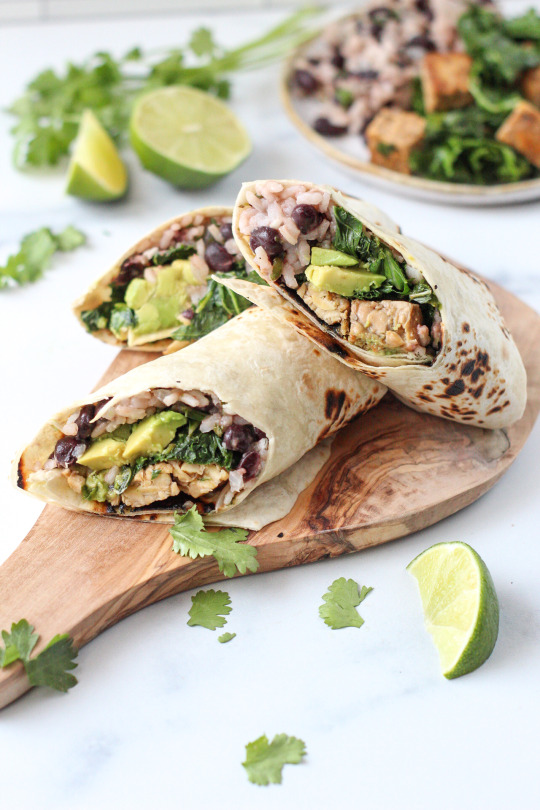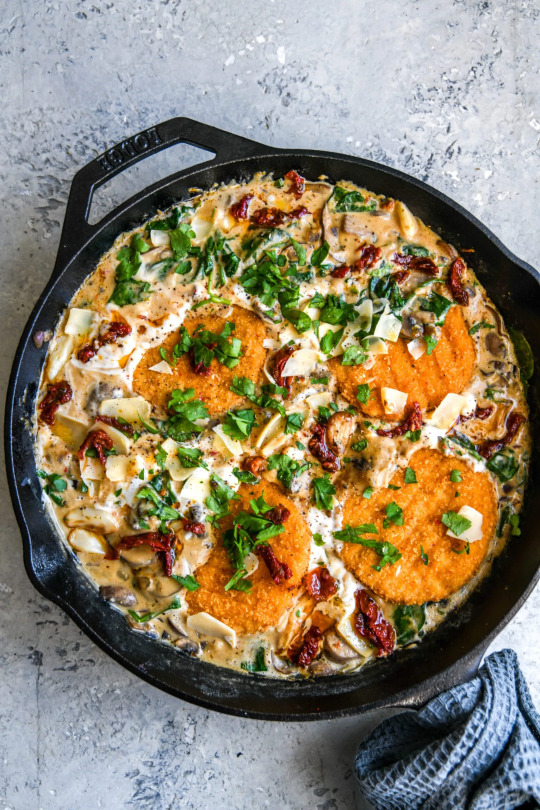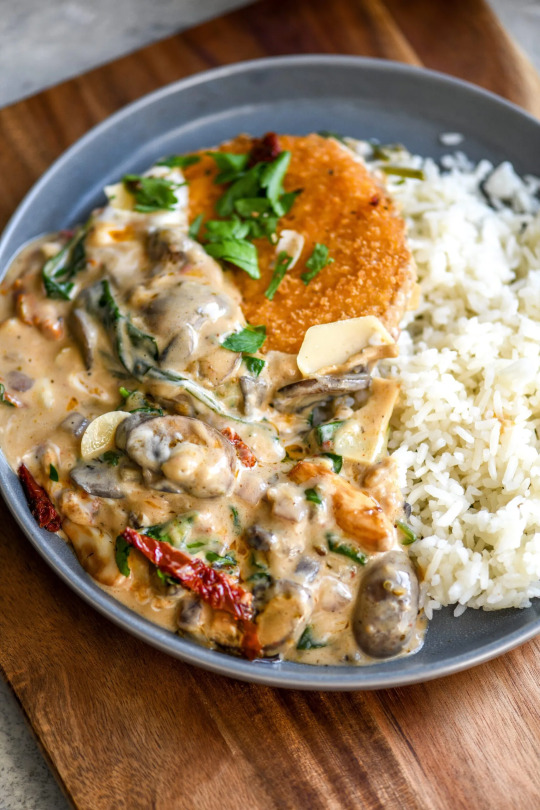#nutritional rice
Explore tagged Tumblr posts
Video
youtube
nutrional rice extrusion machine FRK fortified rice kernels plant artifi...
#youtube#nutritional rice#FRK#FRK rice#rice#rice kernels#rice kernel#artificial rice#extruder#extrusion plant#extrusion#rice machine#rice plant#double screw extruder#twin screw extruder#nutritional rice machine#nutritional rice plant#artificial rice machine#artificial rice plant#artificial rice extruder#rice extruder#FRK extruder
0 notes
Text

Tempeh Burritos
#tempeh#burrito#burritos#mexican#dinner#lunch#savoury#rice#vegansomehow#vegan#veganism#food#recipe#recipes#vegetarian#black beans#avocado#vegan food#veganfood#workout#health#healthy habits#health and fitness#yoga#pilates#nutrition#diet
111 notes
·
View notes
Text

#healthy#food#inspiration#nutrition#nutrients#cooking#health#positivity#dinner#meal ideas#food ideas#meals#meal#ideas#meal inspiration#healthy dinner#dinner ideas#lunch ideas#healthy lunch#lunch#rice#vegan#plant based#plantbased#chickpeas#protein#avocado#spinach#recipe#cook
89 notes
·
View notes
Text

Buffalo Tofu Cutlets with Celery Ranch Slaw (Vegan)
#vegan#lunch#dinner#rice bowl#rice#tofu#celery#vegan yogurt#dill#parsley#onion powder#garlic powder#buffalo sauce#breadcrumbs#paprika#nutritional yeast#plant milk#tamari#lemon#maple syrup#avocado oil#sea salt
36 notes
·
View notes
Text
Thinking about Lestat seeing Louis’s eating patterns as a waste of his gift/himself while Armand gives Louis food that he literally can not enjoy or digest just so he has something on his stomach
#if i had to give each of louis relationship a theme loustat would be shame and loumand would be enabling#which are both really bad ways of “helping” a partner with an ed#lestats shame and anger tactics only make louis more resentful and less likely to eat#while armand having the little drinks and exotic animals and the human food dont actually deal with louis problem head on-#cus at the end of the day louis is still not eating enough#and i think they really exemplifies both of their trauma and abandonment issues#both of them came up chronically food insecure#lestat was put into the role of provider at a very early age and stayed in that role until he died/was turned#so for him rejecting what lestat gives is like rejecting lestat cus he doesnt have anything else to make him “useful”#and lestats reaction to rejection is anger and control so he tries to shame and control louis into eating more/human#while armand has been abandoned by literally everyone he loves up till this point so for him its like#ok i can make people dtay if i give them what they want and what louis wants is to not feel bad about eating and so armand does that#but it still doesnt get to the root of the issue which is louis having poor coping mechanisms for his grief and other emotions#like either way you slice it. louis is not meeting his nutritional needs. he eats drinks from one guy eats a fox or some other small animal#when he should be having like two dudes at least#and then he has human food which according to anne rice makes vampires vomit up their whole stomach content so...#louis imma send you to my therapist shes great#interview with the vampire#iwtv#louis de pointe du lac#amc iwtv#lestat de lioncourt#ldpdl#iwtv 2022#armand iwtv#armand#loumand#loustat#like armand gives louis food he cant eat just so he knows theres something in louis stomach even for a short while
69 notes
·
View notes
Text
Don't mind me, just writing my new funniest part of my zosan fic lmao


#gave zoro an iron deficiency bc i was kinda thinking about his possible diet history and tbh i think it#makes total sense lmao#he had a poor very unbalanced diet growing up im pretty sure of that#like i think its canonically stated or implied he mosly has rice balls at the dojo? whoch i dont think really provides the best#nutritional value or vitamins and shit#at least not a whole lot of it#anyway all that to say i actually think zoro and nami both probably do have some minor vitimin deficiencies related to poor diets#not anemia but chopper definitely isnt happy about their levels#wip#one piece#one piece fanfiction#one piece fankid#roronoa zoro#vinsmoke sanji#black leg sanji#zosan#zoro x sanji
32 notes
·
View notes
Text
I don’t know what it says about me that I hear that a meal is 250 calories and I’m go ‘wow that’s a lot’. Like that is a normal amount of calories for a meal (a small amount for a meal even) my disordered ass just has a fucked sense of how much something is.
#I was looking at the nutrition label for rice cakes and went#‘50 cal? Yeesh that’s a lot’#like what#🌟ving#anor3c1a#light as a 🪶#light as a feather#low cal meal#low cal diet#an0rec1a#@na motivation
17 notes
·
View notes
Text
girl jelp i forgout to eat
#vixen rambles#leftover pizza slice and a piece of carrot cake 7 hours ago. nutrition👍#about to fuck up some rice. maybe i don’t have gender dysphoria maybe i’m just hungry
21 notes
·
View notes
Text

Teriyaki chicken, peppers, and rice
#geekygirlshealthyliving#nutrition#healthy eating#em updates#healthy food#healthy lifestyle#food#im in my rice bowl era for real
69 notes
·
View notes
Note
Pregnant! Xichen looks at his no meat dinner and starts to cry over it. "there are no chicken *sobs*". Lan Queen tells him that no meat means no meat and Lan Zhan already go to find meat for his brother. When he's at Qinghe he can eat anything he wants, and he craves food that he can't eat at home.
The sect rules actually make exceptions for pregnant disciples (the healers insisted, after one too many expecting mothers ended up sick in the infirmary after being told to either ignore their cravings or travel all the way down to Caiyi to buy meat there). However, Lan Xichen craves chicken so much while his children are on the way that his loved ones have to band together to make sure he leaves room for vegetables as well.
#nmj watching lxc eat his third drumstick: please eat a piece of carrot as well love. yes you do have to#baby needs vitamins as well as protein#no you cannot eat the fourth drumstick because then you will be too full to eat any rice or greens#yes i know the baby wants chicken but it hasn't learned about nutrition yet so you must feed it vegetables as well 😔#nmj + lan family are very eager for this strong willed baby to be born#partly because a stubborn lxc is very difficult to coax 🤣#nielan#asks#lan xichen#nie mingjue
16 notes
·
View notes
Photo

Mango Ginger Rice Bowl
#vegan#eat clean#raw vegan#plant based#salad#rice bowl#healthy#healthy food#healthy lifestyle#fitspo#fitblr#wellness#healthy living#diet#nutrition#eat well#summer#eat your veggies#healthblr
212 notes
·
View notes
Text

Black Pepper Tofu & Cauliflower
#savoury#china#chinese#takeout#takeaway#fastfood#dinner#tofu#black pepper#cauliflower#rice#asian food#food#recipe#recipes#vegan#veganism#healthy food#healthy eating#clean eating#health#wellness#nutrition#muscle#gym#gymmotivation#nut free#gluten free#low cal recipes#rice bowl
32 notes
·
View notes
Text

Veggie Rice Paper Rolls
Ingredients:
avocado
tempeh (16g protein per serve)
carrot
capsicum
cucumber
baby spinach / lettuce
rice paper
rice noodles
sesame seeds
#healthy#health#food#inspiration#nutrition#nutrients#cooking#dinner#weight loss#positivity#healthy dinner#dinner ideas#lunch ideas#healthy lunch#lunch#recipe#recipes#colourful#food ideas#healthy food#nutritious#rice paper#rice#rice paper rolls#spring rolls#protein#tempeh#veggies#vegetarian#plant based
18 notes
·
View notes
Text


Easy 30-Minute Creamy Vegan Chicken Skillet (with Mushrooms)
#vegan#dinner#valentine's day#veganized#rice bowl#vegan chicken#rice#mushrooms#sundried tomatoes#spinach#onion#garlic#sauces#paprika#oregano#liquid smoke#soy sauce#cashews#nutritional yeast#cornstarch#parsley#black pepper#sea salt
65 notes
·
View notes
Text

Baked Risotto - Savory Rice Pudding (via Mouthwatering Vegan)
#gluten free#gf food#gluten free foods#dairy free#vegan#egg free#vegetarian#meals#risotto#nutritional yeast#mushrooms#zucchini#corn#brown rice#mouthwateringvegan
15 notes
·
View notes
Link

“Until as recently as 1970, India was a land with more than 100,000 distinct varieties of rice. Across a diversity of landscapes, soils, and climates, native rice varieties, also called “landraces,” were cultivated by local farmers. And these varieties sprouted rice diversity in hue, aroma, texture, and taste.
But what sets some landraces in a class of their own—monumentally ahead of commercial rice varieties—is their nutrition profiles. This has been proved by the research of Debal Deb, a farmer and agrarian scientist whose studies have been published in numerous peer-reviewed journals and books.
In the mid-1960s, with backing from the U.S. government, India’s agricultural policy introduced fertilizers, pesticides, irrigation facilities, and high-yielding varieties of crops under the moniker of a “Green Revolution” to combat hunger. Instead, it began an epidemic of monocultures and ecological destruction.
In the early 1990s, after realizing that more than 90% of India’s native rice varieties had been replaced by a handful of high-yielding varieties through the Green Revolution, Deb began conserving indigenous varieties of rice. Today, on a modest 1.7-acre farm in Odisha, India, Deb cultivates and shares 1,485 of the 6,000 unique landraces estimated to remain in India.
Deb and collaborators have quantified the vitamin, protein, and mineral content in more than 500 of India’s landraces for the first time, in the lab he founded in 2014, Basudha Laboratory for Conservation. In one extraordinary discovery, the team documented 12 native varieties of rice that contain the fatty acids required for brain development in infants.
“These varieties provide the essential fatty acids and omega-3 fatty acids that are found in mother’s milk but lacking in any formula foods,” Deb says. “So instead of feeding formula foods to undernourished infants, these rice varieties can offer a far more nutritious option...”
Deb’s conservation efforts are not to preserve a record of the past, but to help India revive resilient food systems and crop varieties. His vision is to enable present and future agriculturists to better adapt to climate change...
Deb conserves scores of climate-resilient varieties of rice originally sourced from Indigenous farmers, including 16 drought-tolerant varieties, 20 flood-tolerant varieties, 18 salt-tolerant varieties, and three submergence-tolerant varieties. He shares his varieties freely with hundreds of small farmers for further cultivation, especially those farming in regions prone to these kinds of climate-related calamities. In 2022 alone, Deb has shared his saved seed varieties with more than 1,300 small farmers through direct and indirect seed distribution arrangements in several states of India.
One of these farmers is Shamika Mone. Mone received 24 traditional rice varieties from Deb on behalf of Kerala Organic Farmers Association, along with training on maintaining the purity of the seeds. Now these farmers have expanded their collection, working with other organic farming collectives in the state of Kerala to grow around 250 landraces at two farm sites. While they cultivate most of their varieties for small-scale use and conservation, they also cultivate a few traditional rice varieties for wider production, which yield an average of 1.2 tons per acre compared with the 1 ton per acre of hybrid varieties.
“But that’s only in terms of yield,” Mone says. “We mostly grow these for their nutritional benefits, like higher iron and zinc content, antioxidants, and other trace elements. Some varieties are good for lactating mothers, while some are good for diabetic patients. There are many health benefits.”
These native varieties have proven beneficial in the face of climate change too.
With poor rains in 2016, for example, the traditional folk rice variety Kuruva that Mone had planted turned out to be drought-tolerant and pest-resistant. And in 2018, due to the heavy rains and floods, she lost all crops but one: a folk rice variety called Raktashali that survived underwater for two days.
“They have proven to be lifesavers for us,” Mone says.” -via Yes! Magazine, 12/14/22
#india#rice#indigenous knowledge#farming#agriculture#climate change#climate resilience#sustainable agriculture#traditional knowledge#drought resistance#nutrition#good news#hope
205 notes
·
View notes